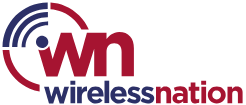Remote Living Essentials
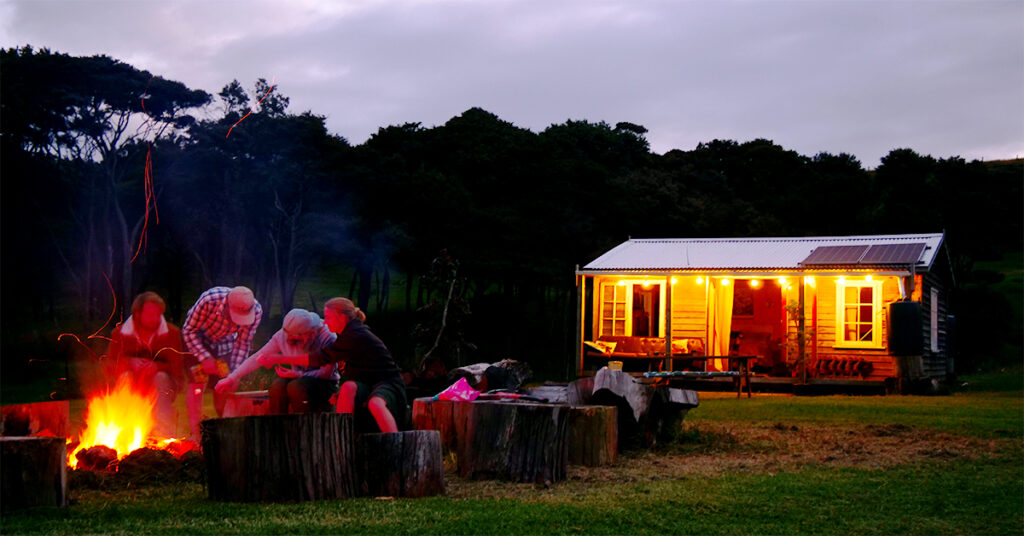
image supplied by GridFree
Four things you need to live off-grid in comfort
Sometimes we just want to get away from it all. Clean air, birdsong, nothing but mountains and forest as far as the eye can see.
New Zealand is the perfect place to get off-grid, whether for a short term holiday or permanent relocation.
But remote living comes with its own challenges: how can you maintain work, health, and lifestyle when you’re living off the grid?
There are degrees to off-grid living and self-sufficiency – do you want to grow your own food, or live close enough to a town? Do you want to hook into the local water supply, or collect your own? Do you want to live luxuriously, or rough it?
You don’t have to choose all-in or all-out, you can design your off-grid lifestyle to suit your needs and ability. For this article, we’ll be guiding you through the four essentials needed to live comfortably: solar power, internet, water, and waste.
Wireless Nation already provides internet services to remote homes and baches across New Zealand, now we’ve teamed up with Rachel Simpson from GridFree to create this beginner’s guide to remote living.
Read it now:
1. Solar power

image supplied by GridFree
Living off-grid doesn’t mean living like a caveman. Solar power is ideal for small to large homes that are either too far from the national grid or are looking for a more sustainable energy source.
Solar has a minimal environmental footprint, and once set up can provide your remote home with consistent power without the ongoing costs associated with being on the grid. (Not to mention power cuts, generator noise, or the cost of installing cables on your land!)
The main thing to be aware of, Rachel from GridFree explains, is that you can’t live the same life off-grid as you did before: “Most people have an electric stove, heatpump, etcetera, but heating and cooking uses a lot of power and it’s incredibly inefficient and expensive to do all that on solar in the way you’re used to.”
“You have to learn to be efficient with your energy use – switch to LPG or woodburning for cooking and heat – pay attention to your solar battery so you can make sure you’re not draining it beyond the recommended levels to ensure its longevity. If you keep your usage within what you generate each day, you won’t have to settle for candlelit dinners!”
Gridfree has a range of solar kits from ‘The Starter Kit’ for caravans and low power users, through to the ‘Bach Kit’ and ‘Lifestyle Kit’ which pack more punch to power a household.
Each kit contains panels, batteries, an inverter, a charge controller, and everything you need to get started with solar. Since they’re designed for DIY, they also come with detailed instructions for installation, and ongoing expert support.
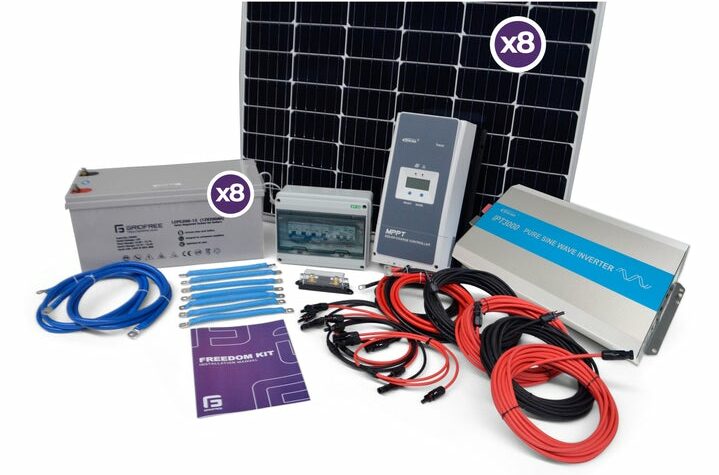
image supplied by GridFree
To give you an idea of just how powerful these things are, here’s an example of what you might do with a Bach Kit on just three hours of sunlight a day (e.g. in winter):
Power a wireless router 24/7
Power a fridge/freezer 24/7
Charge a laptop for four hours and a phone for six hours
Watch two hours of television
Boil a kettle, use a microwave and toaster for 5-10 minutes each (max)
Have lights on for four hours
Run a washing machine twice a week
Solar is an up-front investment, but once it’s purchased you’ll have no ongoing cost for electricity – no monthly bills or statements. Prices range from $2,299 for a Starter Kit up to $17,999 for a Lifestyle Kit.
There’s a bit of a learning curve and a habit adjustment with solar, but nothing that an average Kiwi couldn’t pick up. Once installed, maintenance is minimal and includes cleaning the panels, checking the battery level, and potentially expanding your system if you want more power down the track.
Gridfree has a great guide to What to know before you go solar – check it out here.
2. Internet
A day or two offline can be nice, but pretty soon you find yourself in need of connection. Your mum wants to video call, your kids need Netflix on a rainy day, something’s broken and you need a YouTube tutorial to help you fix it … or maybe you just want to share your remote living journey on Facebook.
Depending where in the country you’re based, there are some different internet options available:
Lifestyle Broadband – flexible internet where you need it
Wireless Nation’s Lifestyle Broadband plan is enjoyed by Kiwis who want the freedom to take the internet with them to their bach, boat, or around the country in a caravan or motorhome.
It’s ideal for holiday-makers as it can be put on hold for the months you don’t need it, and the portable router can be plugged into an outlet wherever you are to provide a stronger signal than a mobile device, and allow multiple devices to connect at once.
In terms of power usage, our wireless modems use 12V-2A; 24 Whr maximum power and 12V-0.5A; 6Whr nominal power, making them a popular choice for motorhomes and off-gridders.
Signal is delivered through hundreds of cell towers across the country. Check our coverage map here to see if you’re covered.
We also provide special deals for members of the NZMCA (New Zealand Motorhome and Caravan Association) and NZ Coastguard.
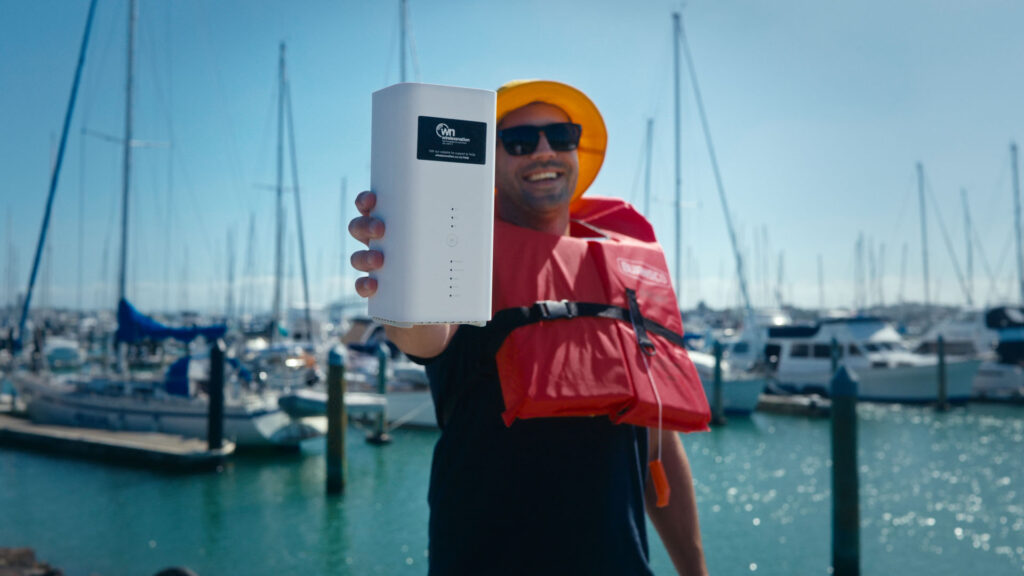
Rural Wireless Broadband.
75% of rural New Zealand can access rural wireless broadband using our plug and play routers. If you’re outside the urban copper and fibre networks, rural wireless is a good solution for fast and secure 4G internet access.
For most users, a plug and play router is all that’s needed, however some remote homes may also need an aerial installed to strengthen the signal. Rural Wireless is ideal for permanent homes and family baches that are within the coverage area.
Satellite – broadband available anywhere in NZ.
If you’re living beyond the reach of the wireless towers, satellite broadband is the next best option for getting online. It’s available in even the most remote locations, all across New Zealand.
Connect via a dish at your home and enjoy fast internet for all your devices. Note that it’s not suitable for gaming due to some signal delays, and in extreme weather, signal can be temporarily lost.
Wireless Nation also offers business and enterprise satellite plans with dedicated bandwidth, enhanced performance, and outage fail-safes if you’re running a business from your remote home.
Contact Wireless Nation to discuss the best plan for your needs.
Water collection
Water is vital for everyday life, from drinking to cooking to washing dishes, clothes and ourselves. It’s also one of the most important logistical challenges to figure out when living off-grid.
If your property has a creek or spring to feed from, you’re in luck. Some properties may even have an underground source that can be reached via bore. However for many off-gridders the best and only option is rainwater.
Bear in mind that whatever water source you have, you’ll also need a filter or treatment system to ensure the water is clean to drink. Unseen contaminants and bacteria can lurk even in clear water, so testing and treating is vital to protect the health of you and your family.
Groundwater and creeks
Council permission is required to divert water from creeks or rivers in many areas, and consent is also required before drilling a well or bore to reach groundwater.
Drilling a bore is perhaps the most complex way of collecting water for your property, as it requires knowledge of the location of an underground water source, the type of aquifer it is, and the technical skill to complete the job.
In both cases a pump is needed to bring the water from its source into your home. While regular pumps can be energy-heavy, there are alternatives such as solar pumps and gravity pumps.
It’s important to test the water for nitrates and other contaminants, especially if there are farms or animals in the surrounding area. Read more about groundwater must-knows here.
Rainwater
Installing a rainwater tank is relatively simple, and as a renewable source it’s got a low environmental impact. It’s a popular choice with off-gridders because it’s easy to set up and maintain.
When it rains, water is funneled off the roof into a tank where it is stored until needed. Rainwater is generally less contaminated than groundwater, but can still pick up bird droppings, leaves, or paint residue from your roof so it’s still important to filter and treat the water before consumption.
The size of the tank you need will depend on how much it rains in your area and how often it’ll be used. For example, parts of Canterbury receive far less rain than the West Coast, so will require larger tanks to get through dry spells. If you’re living in the property permanently, you will also require more water than if it’s a holiday home.
This guide contains everything you need to know about rainwater collection in rural New Zealand.
Waste management

Finally, the part that no one likes to think about – what happens to all your waste. And we’re not just talking about household rubbish here …
Remote and rural homes are not connected to the town sewage system, meaning all waste created on your property must be treated and safely disposed of there too.
There are a couple of options available: a septic tank or a natural system. Both require maintenance and monitoring to ensure that harmful waste or chemicals don’t leach into the surrounding area, and depending on your size and location may also require council consent.
This article talks through some of the key legal requirements when installing a waste management system in NZ.
Septic tank
If you own the land you live on and have no shortage of power, installing a septic tank is a popular option for waste disposal.
A septic system involves two to three tanks that separate, process and filter solid waste from liquid, before dispersing it safely into the land. The tanks should be cleaned every 3 to 5 years depending on usage.
However, the risk with septic is that even when it’s installed well there’s a risk of contaminants leaching into the environment. Many off-gridders prefer to use more sustainable options with a smaller eco footprint.
Natural or eco toilets
Composting toilet
A compost toilet doesn’t require water or power, and is a natural way to transform your human waste into garden-ready fertiliser or “humanure”. A urine separator can reduce odor by splitting liquids from solids, and maintenance varies by model with some needing monthly attention and others lasting years before emptying. See one here.
Incineration toilet
A waterless, odorless, sustainable alternative, this toilet burns waste at high temperatures until only a small pile of ash is left. It can run on gas or electricity, and is popular for being a quick and hygienic waste disposal method. Check it out here.
Biogas toilet
This system transforms human and kitchen waste into clean gas that can be used for cooking, and liquid fertiliser for the garden. It’s a self-sufficient renewable energy that can plug directly into your stove as an LPG gas alternative. See it here.
Septic alternative
Natural Flow produces a wastewater treatment system that’s sustainable and power free, as a low-maintenance septic tank alternative. Installation is more involved than some of the eco options above, but for a permanent off-grid home it’s a large enough system that you won’t need to think about it regularly. Check it out here.
Where to next?
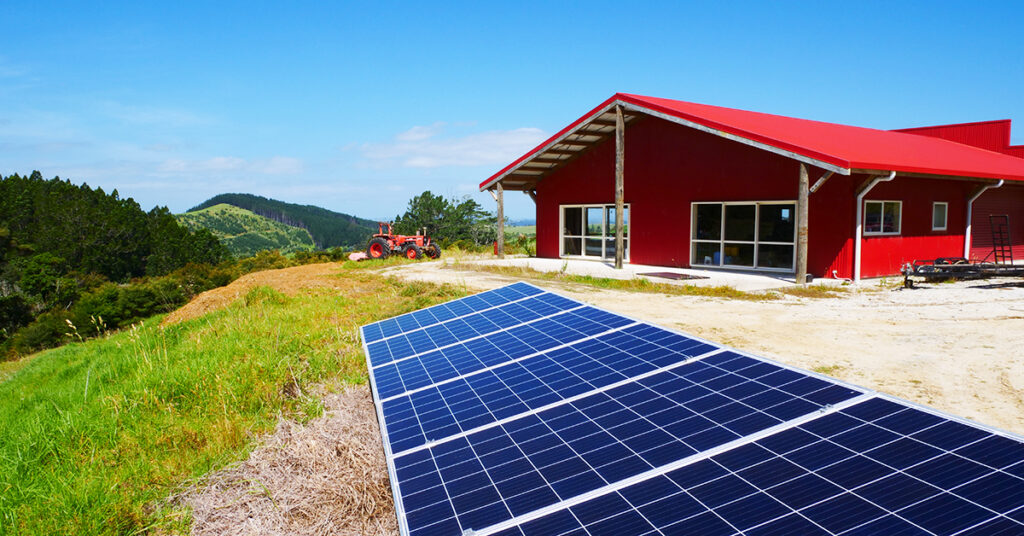
image supplied by GridFree
If you’re preparing for life off the grid, the most important thing you’ll need is support. Join off-grid Facebook groups to connect with like minded others, and follow DIY YouTube channels to learn the tips and tricks you need to survive.
Follow the links throughout the article to learn more and get started, and check out GridFree NZ for products and more off-grid resources.
